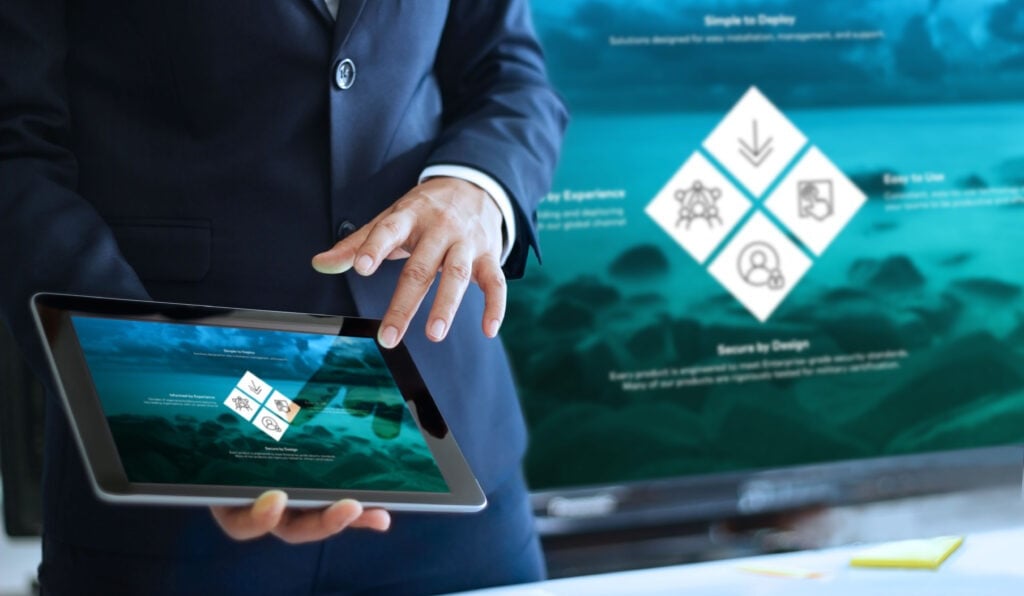Guide to Improving Hybrid Meetings and BYOD Rooms: Technology and Best Practices
Descripción de la publicación.
LT CX
3/11/20253 min read


Corporate Meetings Today
Hybrid meetings and BYOD (bring your own device) rooms are almost a standard in the corporate world. Many executives feel comfortable working and sharing information on their laptop or tablet. They also use it to hold meetings, whether at home, in a meeting room at their own company, or at another company (such as a client or prospect's office, for example). In these instances, they often use platforms (Zoom, Microsoft Teams, Google Meet, etc.) that may not always be the ones they are used to operating.
BYOD is combined with hybrid work, along with the challenges it poses for meetings with groups of people in different formats (in-person and remote). What does it depend on for remote people to feel in the same conditions (or at least similar ones) as those who are seated around a table?
We can list some factors:
A perfect and intelligible audio.
An engaging video that captures the speaker's voice and the gestures of all participants at the same time.
That can view or share content smoothly.
How to achieve a good BYOD and remote work experience?
The first step to adapting meeting rooms for these purposes is to implement the right equipment: a camera (or set of cameras), a microphone (or microphone system), and technology for wireless presentations.
On the other hand, BYOD room solutions provide an easy way to bring hybrid meeting functions to smaller spaces where you may not want to implement a full conference solution.
What are the key factors to implement this technology?
Immediate connection
No drivers to download: the device should connect to the system and that's it. No apps, clicks, or additional software, just plug it into a USB-C port. It is ideal to have a single cable for less complexity.
Smooth content
Anyone, whether at home or the office, should be able to present their content easily and intuitively, without interruptions in the connection.
Intuitive and quick setup
This technology should be an ally, not an enemy. Therefore, setting it up should be simple. It is necessary for it to be a consistent experience across all the company's rooms.
Data analysis
Leveraging the large amount of information provided by the use of rooms can allow managers to make data-driven decisions. Which rooms are used and for how long? Is it worth having a few large rooms or more small rooms? How many people per day book rooms?
Likewise, this can help identify which devices are online and assist IT departments in performing preventive maintenance.
Security
It is ideal to use devices that function as transmitters without storage capacity to prevent the transmission of viruses. It is also recommended that solutions adhere to certain security standards, such as data stream encryption.
Reliability
To ensure functionality and protect the investment, it is key to select reliable brands: knowing that when the device is powered on or the software is launched, it will work without requiring specialized assistance.
Collaboration
In addition to facilitating interaction between people in the room and remotely, touch screens foster creativity: Notes can be taken, brainstorming sessions can be held, to-do lists can be created, or tasks can be prioritized. Then, it is shared as an image with the selected contact.
Digital Signage
Let's imagine that employees enter a room before a meeting and on the interactive screen, they learn about a new corporate benefit. This is also an advantage of equipping the rooms: digital signage can play a key role in spreading relevant information.


Crestron + Jabra: the mix that has it all
The previous features are desirable for creating extraordinary collaboration experiences. Combining Crestron hardware and software with Jabra equipment (particularly AirMedia + PanaCast 50) is an attractive solution that can be adapted to each space.
Why invest in these wireless conference technologies?
They increase the efficiency and productivity of meetings.
The systems and equipment are easy to purchase, implement, scale, and use.
They offer flexible options.
They provide cameras, speakers, microphones, and screens, which shorten the distances between in-person and remote interactions.
They allow for wireless presentation, sharing, and video conferencing from any device.
They ensure call audio quality through intelligent algorithms that eliminate residual echo and static noise.
They enhance internal communication.
Uruguay (HQ)
Paysandú 926
CP 11100
Montevideo
Tel: +598 2902 1477
© 2025 Isbel S.A., a brand Quantik®
Puerto Rico
República Dominicana
Av. Ana G. Méndez 1399, km 3
PR 00926
San Juan
Tel: +1 (787) 775-2100
Carmen C. Balaguer 10
El Millón, DN
Santo Domingo
Tel: +1 (809) 412-8672
Follow us
